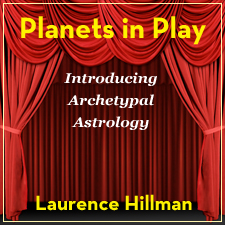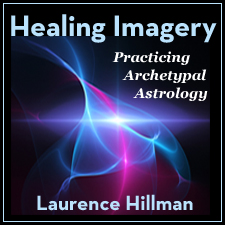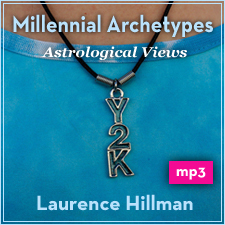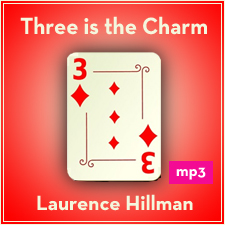Publications
Books

![]() It is rare that one finds a book that breaks new ground with such brilliance and relevance.
It is rare that one finds a book that breaks new ground with such brilliance and relevance.![]()
– Jean Houston, author of over 30 books on human development
![]() I’ve never come across a clearer, calmer, wiser or more powerful model than this for guiding us through the complexities of life and work.
I’ve never come across a clearer, calmer, wiser or more powerful model than this for guiding us through the complexities of life and work.![]()
– Simon Anholt, Founder of the Good Country Index
![]() You can't afford to miss this one!
You can't afford to miss this one!![]()
– John Hagel, Management Guru, Chairman, Center for the Edge
![]() This soul-stirring book reveals the secret of re-enlivening our thinking, leading and working by sourcing the deepest channels and patterns of intelligent life made visible as leadership capability.
This soul-stirring book reveals the secret of re-enlivening our thinking, leading and working by sourcing the deepest channels and patterns of intelligent life made visible as leadership capability.![]()
– Aftab Omer, President, Meridian University

![]() There aren't many books that come along that can still change the breadth and depth of interpreting and explaining astrology. This book can easily do that and is well worth considering.
There aren't many books that come along that can still change the breadth and depth of interpreting and explaining astrology. This book can easily do that and is well worth considering.![]()
– Colonel Clarke E. Johnston, USAF Ret. (practicing astrology for thirty-five years)
![]() This book is a MUST HAVE - an amazing reference tool for anyone practicing psychotherapy.
This book is a MUST HAVE - an amazing reference tool for anyone practicing psychotherapy.![]()
– Merideth Tomlinson, PhD, Psychotherapist
![]() Convention holds that a father shouldn't recommend a work by his son. May I revision this code by endorsing Laurence Hillman's book for its upbeat insights and down-to-earth truths.
Convention holds that a father shouldn't recommend a work by his son. May I revision this code by endorsing Laurence Hillman's book for its upbeat insights and down-to-earth truths.![]()
–James Hillman, author of "Re-Visioning Psychology" and "The Soul's Code"

![]() This is one of the user-friendliest books on astrology I’ve read. The stories are captivating and the vision inspiring. This is astrology at its best, expertly presented and focused on specific issues in real life. Anyone who has yet to discover the intelligence and usefulness of good astrology could begin with this thoughtful and penetrating book.
This is one of the user-friendliest books on astrology I’ve read. The stories are captivating and the vision inspiring. This is astrology at its best, expertly presented and focused on specific issues in real life. Anyone who has yet to discover the intelligence and usefulness of good astrology could begin with this thoughtful and penetrating book.![]()
–Thomas Moore, author of "Care of the Soul" and "The Soul’s Religion"
![]() An extraordinary book, full of practical significance and beautiful, moving stories bridging depth psychology and vibrant astrology. If you want to feel your purpose for being here, with very specific indications of your life work and love, this book shows the way.
An extraordinary book, full of practical significance and beautiful, moving stories bridging depth psychology and vibrant astrology. If you want to feel your purpose for being here, with very specific indications of your life work and love, this book shows the way.![]()
–Robert Sardello, author of "Love and the World" and "The Power of Soul"
![]() The mythic questions of our lives are profoundly addressed in this fascinating and unique orchestration of archetypal astrology and depth psychology.
The mythic questions of our lives are profoundly addressed in this fascinating and unique orchestration of archetypal astrology and depth psychology.![]()
–Jean Houston, Ph.D. author of "A Mythic Life" and "Jump Time"
Articles and Essays
Webinars
Click on a Webinar to learn more about it or to buy it.
Audio Recordings
Click on a recording to learn more about it or to buy it.
Free Downloads
Here is a listing of materials that I have created to help you further understand and learn astrology. Feel free to download any of these. The material is copyrighted and is for your personal use. If it is to be used in a class, please give appropriate credit. If it is used in a publication (including online) please contact me.
 Keywords for the Ten Astrological Archetypes
Keywords for the Ten Astrological Archetypes
A useful reference sheet to remind you what the different planetary archetypes represent.
 Find Your Birth Time
Find Your Birth Time
For an astrological reading it is important to know your time of birth to the minute. For every four minutes that the time of birth is off, details in the chart can change by up to one degree. This can be quite significant. It is worth following all possible avenues to get an accurate birth time.
 The Twelve Principles of Astrology
The Twelve Principles of Astrology
My popular cheat-sheet, crib-sheet, or one-page summary of astrology. A key-word compendium that is handy to have when you are looking at your chart.
 How to Download a Recording of your Consultation
How to Download a Recording of your Consultation
Here are some step-by-step instructions on how to download a recording from consultation so you can listen to it again at your leisure on your computer, tablet or phone.
 BodyArcheTypes
BodyArcheTypes
A handy one-page (Use Legal size paper if you print it!) chart of how the planets and signs map out on the human body.
 The Eight Lunation Cycle Types
The Eight Lunation Cycle Types
This is a large file (1.6MB) and only recommended for high-speed surfers. Be patient during the download.
 Gift Certificates
Gift Certificates
If you need a Gift Certificate you can get one here. Then sign up the recipient so that I get all the information I need to get the reading started.
 Practice Sheet
Practice Sheet
Draw Astrological symbols! If you want to learn how to draw the symbols that appear in your horoscope this is a handy practice sheet to do just that.
 Planetary Aspects and Orbs
Planetary Aspects and Orbs
If you want to learn about aspects and orbs, this sheet shows you how these are figured in your chart.
Podcasts
Join Lynn Bell and Laurence Hillman for an engaging conversation about the current times as they focus on containment, protest, Saturn in Aquarius, the Aquarius/Leo polarity and the sovereign archetype, the nodal axis in Gemini/Sagittarius and more. With Tony Howard, see Astrology University

 The Age of Aquarius - An Introduction
The Age of Aquarius - An Introduction







